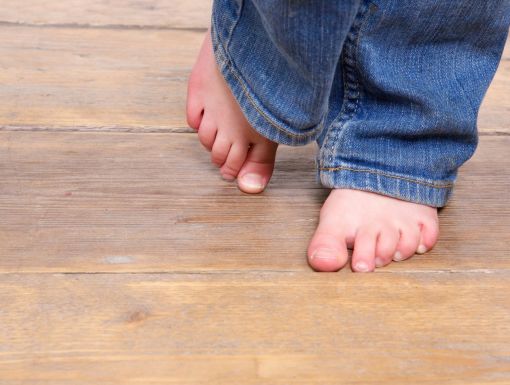
Is W Sitting Harming Your Child?
Your child plops down on the floor with their bottom between their legs, knees bent and rotated away from their body in the shape of a W. What is this strange seating position? Is it safe for a child's orthopedic development?
The W-shape that is formed by a child's outward-bent legs gives this seating stance its signature name. Many children prefer to W sit because it provides a broad base of support and allows the child to play without challenging their balance or engaging their trunk musculature. To adults, this position looks at best uncomfortable. At worst, it might spark fears of some anatomical issue.
Children may adopt this position at times, especially during play. However, there can be problems if it becomes their default seating position or if a child remains in a W-sit for an extended period.
What’s wrong with W sitting?
Decreased core strength. W sitting position provides children with a broader base of support in which children compensate for core and back weakness. Children need to be able to weight shift and rotate at their trunk to develop proper balance reactions, develop postural control, cross the midline, and attain developmental milestones.
Muscle tightness. W sitting position allows for increased risk of hamstring contracting due to positioning. This can also affect the child's spine curvature due to the hamstring's pull on the spine. The hip rotators are also at risk of becoming tight for children who prefer W sitting. Muscle tightness can lead to imbalance, impaired coordination, and gross motor delay as children age, limiting their ability to perform activities such as galloping and skipping.
Orthopedic problems with lower extremities. W sitting can cause orthopedic problems with hips, knee, and ankles, including hip dislocation, knee instability, "knock knee position," and "pigeon toe." Pigeon toe walking may increase the child's chance of back or pelvic pain as they grow.
Lack of bilateral coordination. W sitting position inhibits the ability for trunk rotation leading to inability to cross the midline. This is turn affects handwriting, object manipulation, fine motor skills and other extracurricular activities.
How can we correct W sitting?
Breaking a W-sitting habit may require a bit of time and effort. Here are some seating positions to practice until they become a part of your child's playtime routine.
- Tailor sitting (legs crisscross)
- Extended sitting (legs straight out in front)
- Ring sitting
- Side sitting (legs bent at the knees with both knees facing either left side or right side)
- Kneeling
- Small chair or stool
Editors note: This article was originally published on Sep 7, 2018.
Helping Children Be Their Healthiest Selves. Find an Ochsner pediatrician near you.


